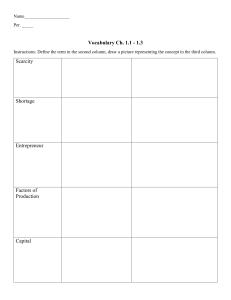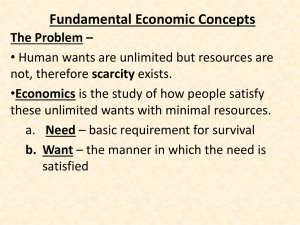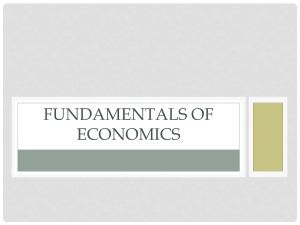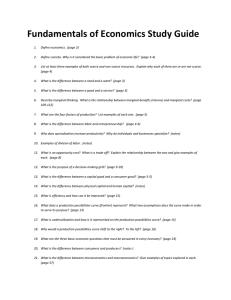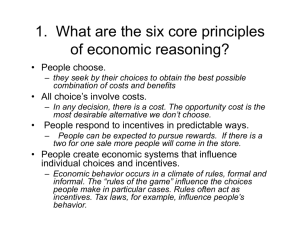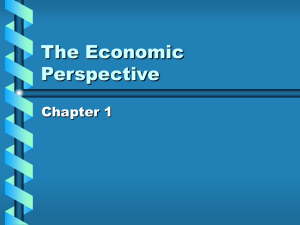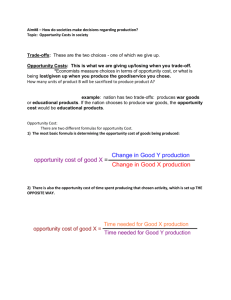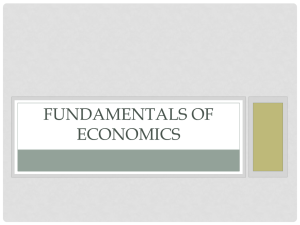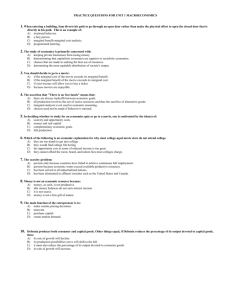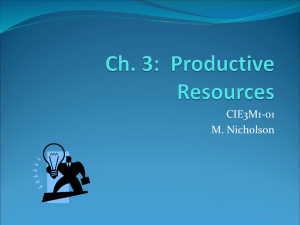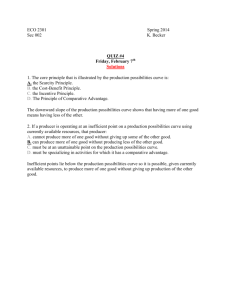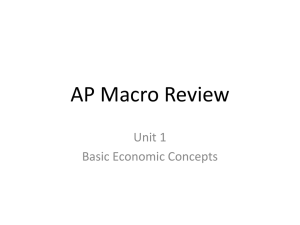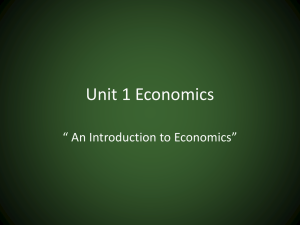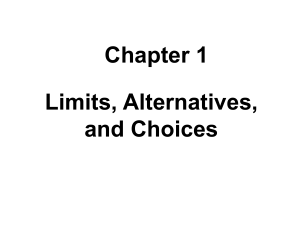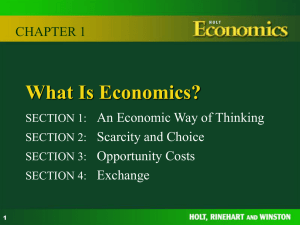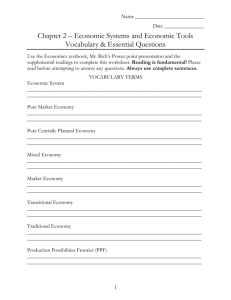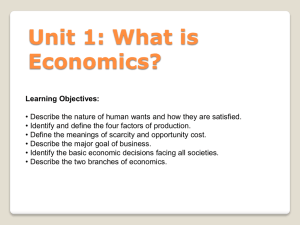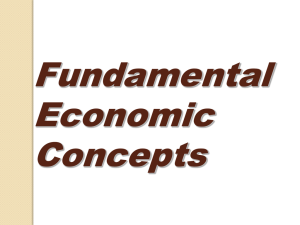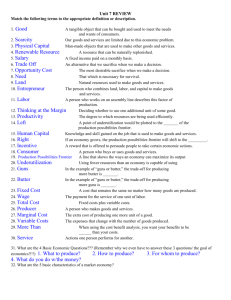Chapter 1 for Website
advertisement
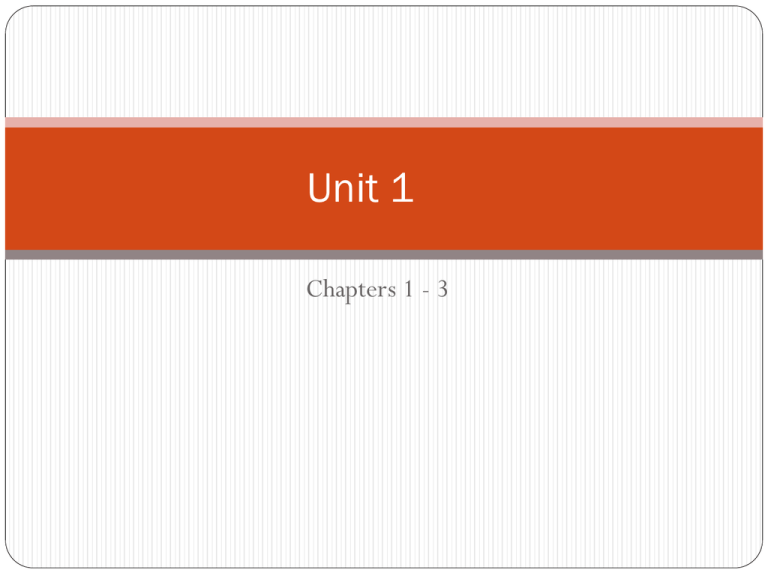
Unit 1 Chapters 1 - 3 Chapter 1 – What is Economics? Society is structured around the idea that everybody has needs and wants. Goods and services fulfill them. Needs – essential for survival i.e. food, shelter Wants – we desire, but not necessary i.e. IPhone, 60” HDTV Some items can be both a need and want i.e. Cowfish Goods – tangible/physical objects i.e. food, clothing, electronics Services – actions/activities that one person performs for another i.e. haircut, tax return, manicure, oil change Some things can provide both a good and service i.e. restaurant serves you food (good), but also cooked (service) the food What is Economics? Peoples needs and wants are unlimited Scarcity – fact that limited amounts of goods and services are available to meet unlimited wants This is the Basic Economic Problem Economics – the study of how people seek to satisfy their needs and wants by making choices Scarcity vs. Shortage Scarcity always exists i.e. gold Shortages are caused by suppliers not making more of a good/service i.e. IPad What is Economics? To satisfy needs and wants resources must be turned into goods/services Entrepreneurs – people who decide how to combine resources to create new goods and services Factors of Production – the resources individuals use to make all goods/services Land – all natural resources i.e. oil, timber, water Labor – people/workers i.e. doctor, farmer, assembly line worker Capital - resources used to produce other goods and services Physical Capital – buildings, equipment, tools, computers, etc. Human Capital – knowledge and skills a worker gains through education/experience Benefits of Capital – extra time, more knowledge, more productivity Chapter 1.1 Questions What is the difference between goods and services? What does an entrepreneur do? Identify the factor of production represented by each of the following: A. fishing waters B. an office building C. clerks in a store D. a tractor E. a student in a cooking school Think of a good or service you consumed today. List at least five factors of production used to produce that good/service. Opportunity Cost - Every time we choose to do something we give up the opportunity to do something else. Determine Opportunity Cost The most desirable alternative given up as the result of a decision Usually the difference between cost of what you chose and cost of what you didn’t choose Trade-off – giving up one benefit in order to gain another, greater benefit. Individuals Businesses Government Thinking at the Margin – when you decide how much more or less to do Ex. Sleeping in: get more sleep, but might miss the bus Cost/Benefit Analysis – comparing opportunity costs and the benefits, what will be sacrificed vs. what will be gained Marginal Cost – the extra cost of adding one unit ex. One more hour of sleep Marginal Benefit – the extra benefit of adding the same unit As long as the marginal benefits exceed the marginal cost it pays to add more units. Decision making at the Margin Chapter 1.2 Questions Why do all economic decisions involve trade-offs? Why do many economic decisions involve thinking at the margin? Identify a possible opportunity cost for each of the following choices: A. studying for a test on a Saturday afternoon B. using all the money you received for your birthday to pay for downloading songs C. spending four hours playing a video game on a Tuesday night D. having four slices of pizza for lunch Production Possibilities Curve How do you decide what and how much to produce? Production Possibilities Curve – a graph that shows alternative ways to use an economy’s productive resources. Production Possibilities Frontier – a data line showing the possible combinations of production of certain items Production Possibilities Curve Efficiency, Growth, and Cost A production possibilities frontier shows an economy working at its most efficient level Efficiency – the use of resources in such a way as to maximize the output of goods/services Underutilization – the use of fewer resources than the economy is capable of using Growth/increases in factors of production and shift the production possibilities frontier There will always be opportunity costs when determining what and how much to produce Some resources are better suited to produce certain goods Technology and Education increase efficiency Efficiency, Growth & Cost Chapter 1.3 Questions What is a production possibilities curve? What do economists’ mean by growth? What factors can produce economic growth? Explain how each of the following circumstances is likely to affect a nation’s production possibilities frontier: A. The opening of a new college of engineering B. an earthquake in the nation’s chief farming region C. a new type of chemical fertilizer D. a shortage of oil
